Memory is a computer’s indispensable component that stores and manages data. It is an electronic place to hold data or instructions so that they are quickly accessible to a computer's CPU. The CPU retrieves the desired data from memory and follows the stored instructions while executing programs.
Beyond holding data to be processed and instructions to be followed, memory stores immediate results of ongoing computer operations. Hence, a computer can quickly access these immediate results for subsequent operations. This entire process improves the overall computer performance.
Memory is categorized into two broad categories based on its ability to store data temporarily or permanently. These two broad categories are volatile memory and non-volatile memory.
Volatile memory can retain its content only until a computer is on. Once the computer shuts down, it loses all its data. Hence, it is referred to as temporary memory. In contrast, non-volatile memory retains data even if the computer shuts down or crashes suddenly. It stores data permanently until the user deletes it.
This blog post will walk you through the details of non-volatile memory.
What is Non-Volatile Memory (NVM)?
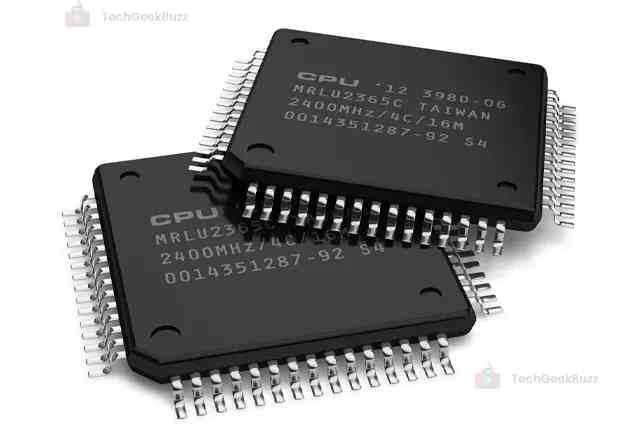
Non-volatile memory is a type of computer memory that retains data even after a computer disconnects from the power supply. Hence, we refer to it as permanent memory. It leverages semiconductor technology that eliminates the need for a continuous power supply to hold data.
Generally, non-volatile memory is more expensive and slower, offers lower performance, and has less lifespan than volatile random access memory.
Read Only Memory (ROM) is the most common example of non-volatile memory. Other examples include hard drives and flash memory (SSDs).
When we say non-volatile memory, it refers to the storage space on semiconductor memory chips that store data in floating-gate memory cells. This memory's primary use is for secondary and long-term persistent storage.
Different types of non-volatile memory chips are available that serve different purposes. For instance, hard disk drives (HDDs) and tape drives feature a type of NVM chip that stores a controller program for them. Another type of NVM chip is used in solid-state drives (SSDs), USB drives, and memory cards for data storage.
Characteristics of Non-Volatile Memory (NVM)
The following are the significant characteristics of non-volatile memory:
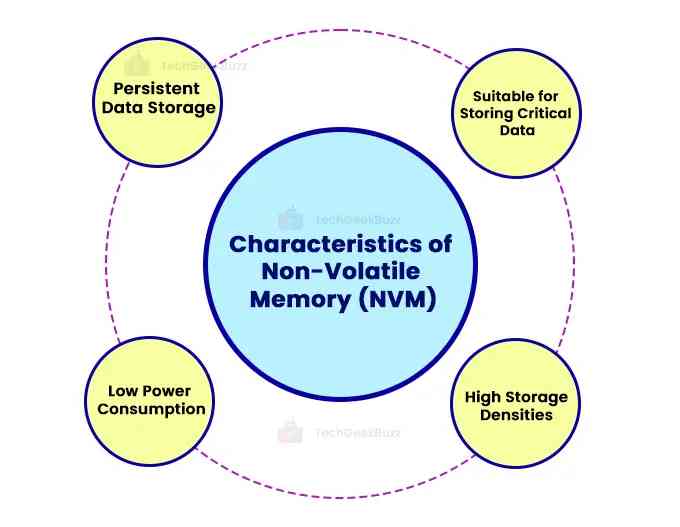
- Persistent Data Storage: NVM retains data even if a computer system shuts down. This persistent nature of NVM makes it reliable to store sensitive and vital information.
- Low Power Consumption: NVM consumes relatively less power than volatile memory. Hence, they are ideal for portable, hand-held devices like mobile phones, tablets, and digital cameras.
- High Storage Densities: Compared to volatile memory, non-volatile memory offers high storage capacity, allowing you to store large amounts of data for the long haul.
- Suitable for Storing Critical Data: NVM is ideal for storing critical data, such as firmware, configuration data, BIOS, and any other information that needs to be retained for a long time.
Types of Non-Volatile Memory
The two broad categories of NVM are electrically-addressed and mechanically-addressed. They are categorized based on the underlying technology used to read and write data.
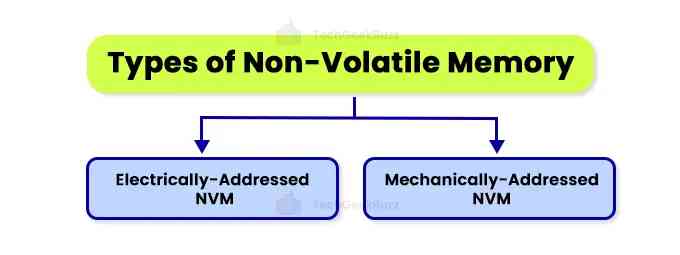
1. Electrically-Addressed NVM
This non-volatile memory leverages electrical signals to conduct data read and write operations. Electrically controlled circuits allow electrically-addressed NVM access and store data in memory cells.
The following are some popular examples of electrically-address NVM:
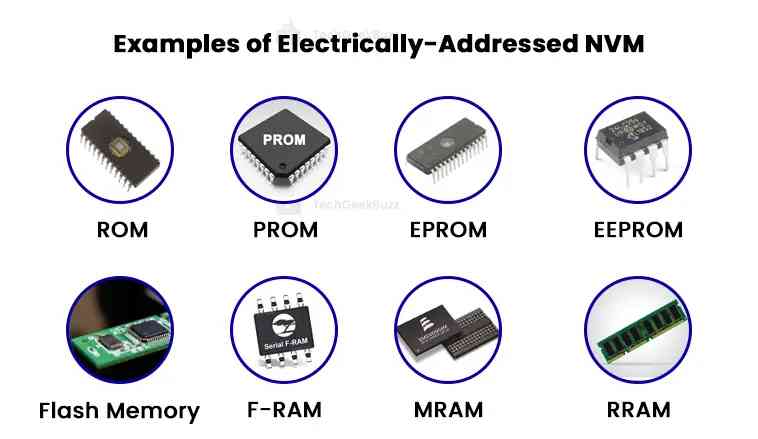
-
Read-Only Memory (ROM)
ROM is the most popular example of non-volatile memory in computers and many other electronic devices. It is primarily used to store data or instructions that rarely change. This is because modifying data stored in ROM is impossible after it is manufactured electrically.
-
Programmable Read-Only Memory (PROM)
PROM is a type of ROM whose content can be changed only once after manufacturing a storage device . It does this using a PROM programmer. PROM is programmed before it is installed into the target device. Once programmed, changing it is impossible. You must consider replacing the storage device if you want to change programming further.
-
Erasable Programmable Read-Only Memory (EPROM)
EPROM enables modifying data multiple times. However, doing so requires a special programmer circuit. It erases data using ultraviolet (UV) light through a quartz window. However, the major drawback is it erases the whole device at one time.
-
Electrically Erasable Programmable Read-Only Memory (EEPROM)
EEPROM leverages electricity to erase data from memory. It supports erasing individual bytes of data. Hence, they are widely known as byte-erasable chips. You can erase and reprogram data in EEPROM repeatedly using the electrical voltage.
-
Flash Memory
Flash memory, also known as flash storage, is a non-volatile memory that erases data in blocks but rewrites data at the byte level. Consumer devices, enterprise systems, and industrial applications leverage flash memory for data storage and transfer.
Devices with flash memory use two different technologies for data mapping – NAND and NOR.
- NOR Flash: It enables high-speed reading and writing of data to a specific memory location. It supports random access to data, allowing you to retrieve as little as a single byte.
- NAND Flash: It enables high-speed reading and writing of data sequentially to memory. It handles data in blocks.
Compared to NAND Flash, NOR Flash is faster in reading data. However, NAND Flash offers higher storage densities at affordable prices.
-
Ferroelectric RAM (F-RAM)
F-RAM is a type of random access memory similar to dynamic RAM (DRAM) in construction because both leverage a capacitor and transistor. The only difference is that F-RAM leverages the ferroelectric layer instead of the dielectric layer. This ferroelectric layer helps achieve nonvolatility.
This non-volatile memory comprises a thin ferroelectric film of lead zirconate titanate [Pb(Zr, Ti)O3]. The changing polarities of Zr/Ti atoms produce a binary switch.
F-RAM offers extremely high endurance, more than 1016 read/write cycles for devices with 3.3V. It consumes less electricity, offers high single-cycle write speeds, and has high gamma radiation tolerance.
-
Magnetoresistive RAM (MRAM)
As the name suggests, MRAM leverages magnetic tunnel junctions (MTJs), magnetic storage elements, to store data. It does not use an electric charge to store data bits.
-
RRAM
RRAM, or ReRAM, stands for Resistive Random Access Memory. It is a non-volatile RAM that works by changing the resistance across a memristor, a dielectric solid-state material. The memristor is the compression of the Memory Resistor. It changes its resistance when subjected to different voltages.
2. Mechanically-Addressed NVM
Mechanically-addressed NVM leverages mechanical processes to read and write data to memory. It generally utilizes a recording head, a physical interface between a recording device and a moving recording medium, to read and write data to a specific storage device.
The popular examples of mechanically-addressed NVM are optical disks. An optical disk is an electronic data storage medium leveraging a low-powered laser beam to read and write data. Compact disks (CDs), Digital Video Disks (DVDs), and Blu-Ray disks are three common optical disks found today.
Conclusion
Non-volatile memory (NVM) serves as a medium for secondary and long-term, persistent data storage. Like volatile memory, NVM is also an indispensable component of a computer. It stores data even if a computer disconnects from the power supply. This ability of persistent data storage makes NVM ideal for storing sensitive and private information for a long period.
People are also reading:
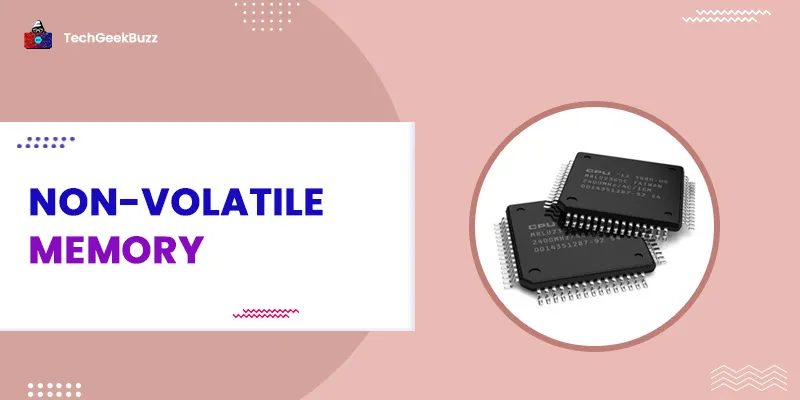

![What is an Assembler? [Definition, Working, & Types]](/media/new_post_images/What_is_Assembler.jpg)
![What is I/O? [Types, Examples, & Methods]](/media/new_post_images/What_is_I_O.webp)

Leave a Comment on this Post